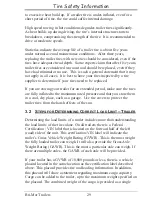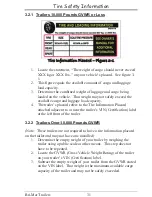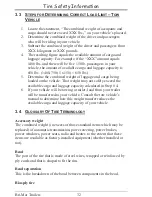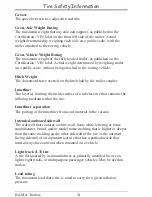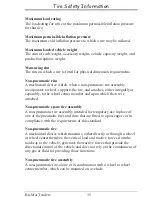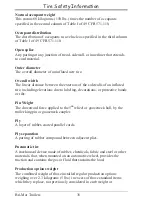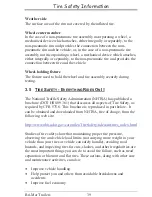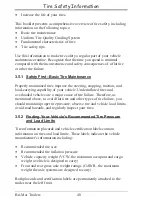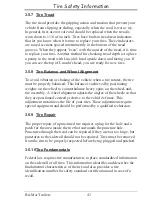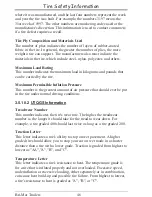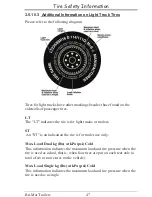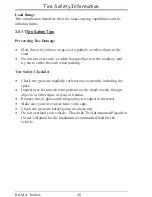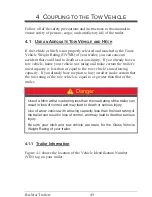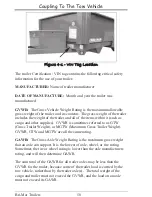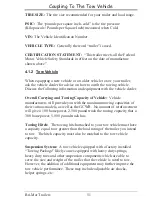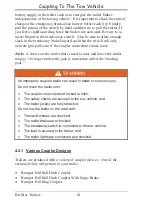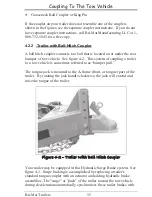
Tire Safety Information
Bri-Mar
40
•
Increase the life of your tires.
This booklet presents a comprehensive overview of tire safety, including
information on the following topics:
•
Basic tire maintenance
•
Uniform Tire Quality Grading System
•
Fundamental characteristics of tires
•
Tire safety tips.
Use this information to make tire safety a regular part of your vehicle
maintenance routine. Recognize that the time you spend is minimal
compared with the inconvenience and safety consequences of a flat tire
or other tire failure.
3.5.1 Safety First–Basic Tire Maintenance
Properly maintained tires improve the steering, stopping, traction, and
load-carrying capability of your vehicle. Underinflated tires and
overloaded vehicles are a major cause of tire failure. Therefore, as
mentioned above, to avoid flat tires and other types of tire failure, you
should maintain proper tire pressure, observe tire and vehicle load limits,
avoid road hazards, and regularly inspect your tires.
3.5.2 Finding Your Vehicle's Recommended Tire Pressure
and Load Limits
Tire information placards and vehicle certification labels contain
information on tires and load limits. These labels indicate the vehicle
manufacturer's information including:
•
Recommended tire size
•
Recommended tire inflation pressure
•
Vehicle capacity weight (VCW–the maximum occupant and cargo
weight a vehicle is designed to carry)
•
Front and rear gross axle weight ratings (GAWR– the maximum
weight the axle systems are designed to carry).
Both placards and certification labels are permanently attached to the
trailer near the left front.
Trailers
Summary of Contents for DT508LP
Page 144: ...Electrical Drawings Bri Mar 138 Trailers...
Page 145: ...Bri Mar 139 9 ELECTRICAL DRAWINGS Trailers...
Page 146: ...Bri Mar 140 Trailers...




